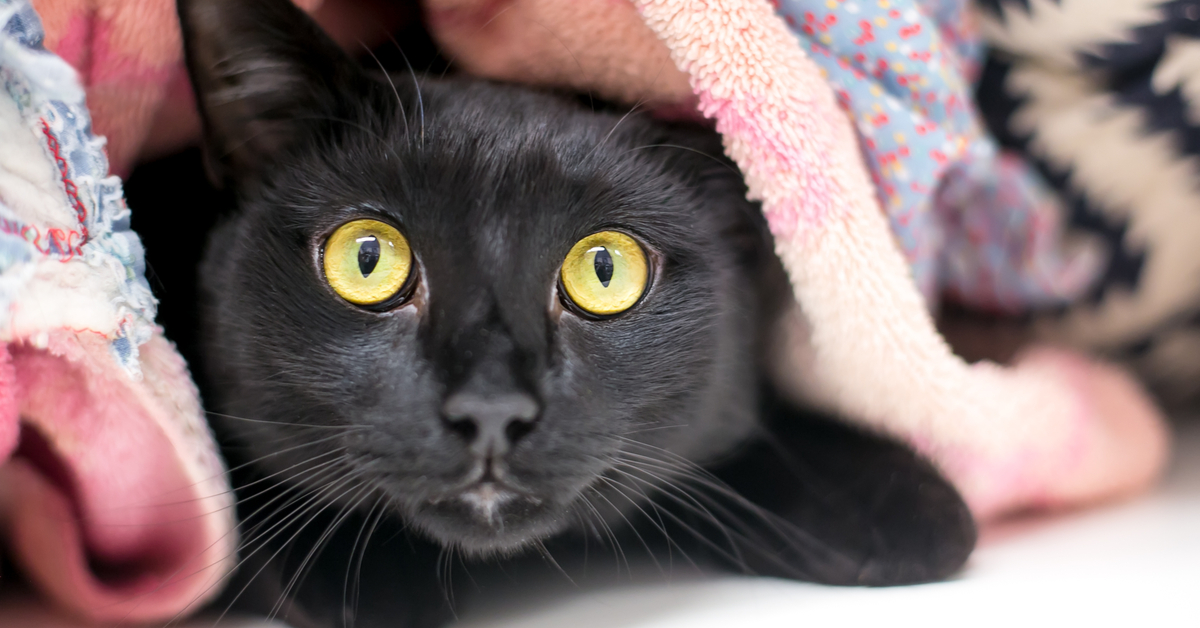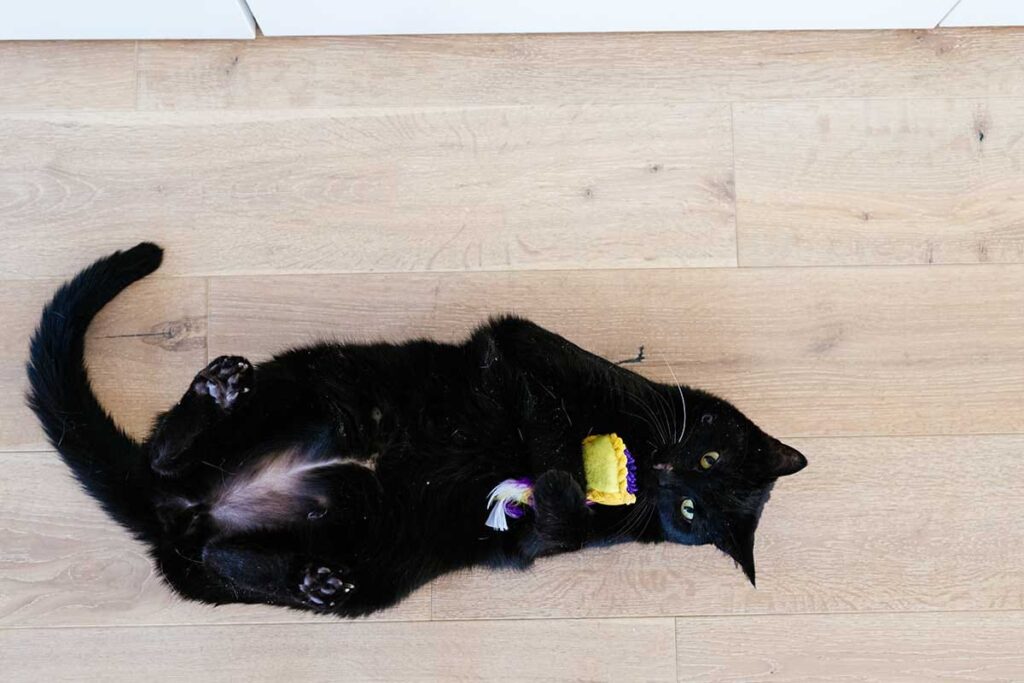Have you ever seen your cat’s eyes in the dark? Eerie, isn’t it? You pick your way across a dark room, carefully patting for furniture, so you don’t stub your toe, and under a chair, a pair of eyes glow at you.
Not to worry, your cat isn’t going to think you’re a giant mouse. Most likely, they’ll hang out in their preferred spot until they change their mind.
You know cats have incredible night vision, and they can see in the dark and in dim light. But just how well do they see? Do they see different colors? Do they see as well as humans?
Let’s find out.
What Is Colorblindness?

The term “colorblind” references difficulty with color perception. Those who are colorblind often have trouble with red and pink but blue-violet and yellowish tones are fine. Additionally, they may not see a color like purple the same as someone who has typical color perception abilities.
Ok, but what about our feline friends? Are cats colorblind?
While it was once thought both dogs and cats were colorblind, newer research shows cats’ eyes can absorb a wider range of wavelengths than dogs. Yet, neither species can see the range of colors available to the human eye.
It’s the rods and number of cones to blame. Every species have specialty cells in its eyes. These rods and cones have specific purposes in your cat’s ability to see.
The cones help animals see different colors while the rods pick up on movement and depth perception. The human eye has more cones than cat eyes. As a result, people usually perceive a greater range of colors than our furry friends since cats have fewer cones.
Do Cats See Color?

Yes, but they don’t see all colors. Many scientists believe cats can distinguish some colors with blue-green or yellowish hues while other colors are difficult for them. For example, red is a tough color for cats to see.
Artist Nickolay Lamm set out to help us see the world through a cat’s eyes. He consulted with veterinarians for accuracy and produced a set of photographs that compare human eyesight to cat vision. In his photographs, the cats see color and shapes but their vision is blurry.
However, his view of a cat’s night vision reminds me of those night vision goggle scenes you see in some action movies. Where the human vision sees a dark streetscape with a street light, the cat’s vision is excellent. Sure, it’s not as sharp but the cat can spot any prey scurrying along the street.
It’s a trade-off, cats don’t need bright light to spot their prey. Rather dim light enhances their ability to focus on slight movements that could indicate prey.
Photoreceptors Make All the Difference

The difference in color perception comes down to those rods and cones in the retina. You might remember a reference to the retina from biology class. It’s a layer of tissue that lines the back of the eye. This retina tissue has photoreceptor cells that transform light into images.
Those cone cells are the ones responsible for identifying a range of colors. There are different types of cones to “see” red, blue, and green combinations and each color adheres to a wavelength. If you’ve ever played with a prism and seen the rainbow reflected on the nearest wall or furniture, you may have noticed that red stood out. That’s because it has the longest wavelength.
Each color has its own wavelength and the yellow tones fall in the middle making it easier for cats to see than red or purple. Humans have ten times more cones in our eyes than our cats so we can see a broader range of colors.
Yet, cat vision trounces that of humans in other ways.
Cats Have Better Peripheral Vision

While the cones are responsible for color, the rods are responsible for peripheral vision and cat retinas have more rods than people do. This enhanced field of vision means cats win when it comes to picking up on peripheral or slight movements.
Plus, cats have elongated eyes that extend to the sides of their heads, so they enjoy a broader range of vision. For example, humans have a field of vision of 180 degrees and cats can see about 200 degrees. That extra twenty degrees means they can better spot potential prey.
You’ve probably noticed our feline friends are also most alert at dusk and dawn. Designed for these low light situations, cat’s eyes developed with more rod cells for better night vision.
Additionally, cats have an extra reflector in their retina called the tapetum lucidum. This reflector in the cat’s retina is the reason why your cat’s eyes glow in the dark. It also aids that famed kitty night vision because it lets in more light through the pupil.
This heightened peripheral vision is also one of the reasons why you can point a laser pointer across the room and away from your cat and they’re likely to notice. The movement catches their attention.
How Does a Cat’s Vision Affect Their Prey Instinct?

Our feline friends are well-equipped for hunting prey, especially in low-light situations. Everything from the shape of their eyes, to the rods and cones within the retina ensures they’re able to spot movement and some colors in all kinds of settings.
You’ve probably seen your kitty crouch in position and watch something for a long time. Maybe their tail twitches back and forth while they wait for the right moment to pounce. You may not even be able to see what they’re focused on. Yet, their receptors are meant for low light or even the dark. Their additional rod cells mean they can detect slight movements in the dark and at a distance.
It’s a trade-off for sure. Cats aren’t colorblind, but they don’t see a wide range of colors. Nor, do they see the color saturation visible by the human eye. Yet, they do have an enhanced visual acuity in other ways like with a wider range of vision and the ability to see in low light.
Next time you see your kitty’s eyes glow in the dark, could they be ready to pounce on something you don’t see?

